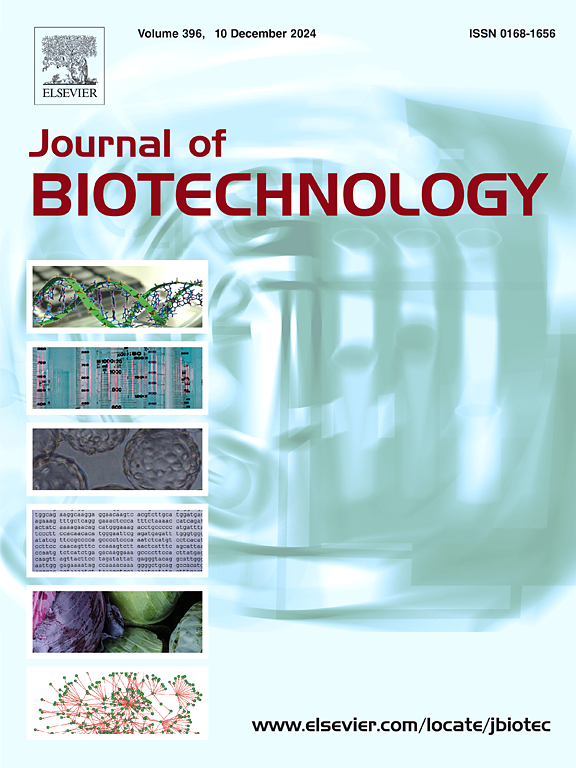Preparation of high-purity 1,3-distearoyl-2-oleoylglycerol (StOSt) via a two-step enzymatic interesterification combined with two-step solvent fractionation
IF 3.9
2区 生物学
Q2 BIOTECHNOLOGY & APPLIED MICROBIOLOGY
引用次数: 0
Abstract
High-purity 1,3-distearoyl-2-oleoylglycerol (StOSt) was produced from high-oleic sunflower oil and ethyl stearate via a two-step enzymatic interesterification combined with a two-step solvent fractionation. Lipozyme RM IM (Rhizomucor miehei) was employed as a biocatalyst and the reaction was conducted in a packed-bed reactor. Molecular distillation was used to remove fatty acid ethyl esters from the reaction mixtures after enzymatic reactions. The optimum conditions were a temperature of 55 °C, a water content of 300 ppm (based on the total weight of the substrate), and a molar ratio of 1:8 (triacylglycerol (TAG) to ethyl stearate). The second enzymatic interesterification was carried out under the optimum conditions, resulting in the synthesis of 67.8 % StOSt-enriched TAG. To further enrich StOSt, two rounds of solvent fractionation were conducted using n-hexane and acetone, respectively. Consequently, StOSt TAG with a high purity of 83 % was achieved through the processes designed in this study.
两步酶催化酯化结合两步溶剂分离制备高纯度1,3-二硬脂酰-2-油基甘油(StOSt)
以高油分葵花籽油和硬脂酸乙酯为原料,经两步酶催化酯化和两步溶剂分离制备了高纯度的1,3-二硬脂酰-2-油基甘油(StOSt)。采用脂酶RM (Rhizomucor miehei)作为生物催化剂,在填充床反应器中进行反应。采用分子蒸馏法从酶促反应混合物中分离脂肪酸乙酯。最佳条件为温度55°C,含水量300 ppm(基于底物的总重量),摩尔比1:8(三酰甘油(TAG)与硬脂酸乙酯)。在最佳条件下进行第二次酶促酯化反应,合成了富含67.8 % stost的TAG。为了进一步富集StOSt,分别用正己烷和丙酮进行了两轮溶剂分馏。因此,通过本研究设计的工艺,可以获得纯度为83 %的StOSt TAG。
本文章由计算机程序翻译,如有差异,请以英文原文为准。
求助全文
约1分钟内获得全文
求助全文
来源期刊

Journal of biotechnology
工程技术-生物工程与应用微生物
CiteScore
8.90
自引率
2.40%
发文量
190
审稿时长
45 days
期刊介绍:
The Journal of Biotechnology has an open access mirror journal, the Journal of Biotechnology: X, sharing the same aims and scope, editorial team, submission system and rigorous peer review.
The Journal provides a medium for the rapid publication of both full-length articles and short communications on novel and innovative aspects of biotechnology. The Journal will accept papers ranging from genetic or molecular biological positions to those covering biochemical, chemical or bioprocess engineering aspects as well as computer application of new software concepts, provided that in each case the material is directly relevant to biotechnological systems. Papers presenting information of a multidisciplinary nature that would not be suitable for publication in a journal devoted to a single discipline, are particularly welcome.
 求助内容:
求助内容: 应助结果提醒方式:
应助结果提醒方式:


